Trading Diary
August 2, 2002
The Chartcraft NYSE Bullish % Indicator has given a bull alert signal, starting a new column with a reading of 30% (August 1).
The Nasdaq Composite, down 2.5% at 1247, closed the breakaway gap from Monday's follow-through. The primary cycle is in a down-trend.
The S&P 500 closed 20 points down at 864, holding just
above the
follow-through day from Monday.
The primary cycle trends downwards.
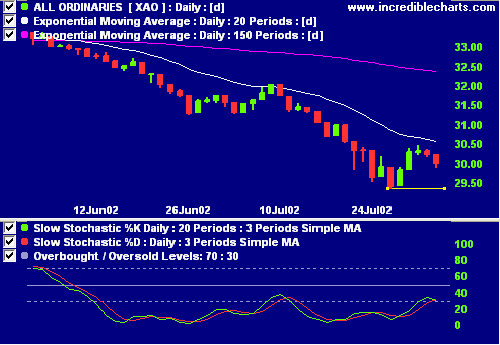
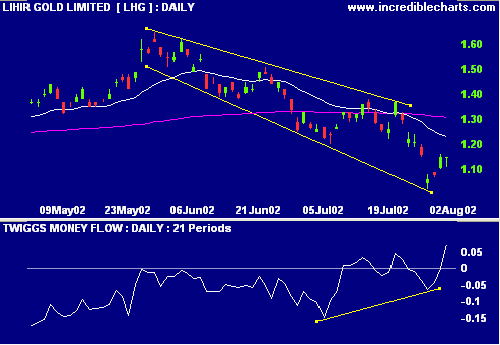
Exponentially-smoothed money flow displays a bullish divergence.
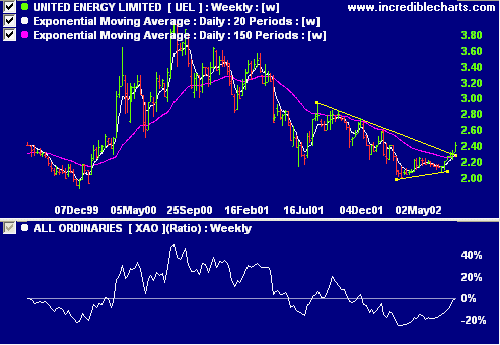
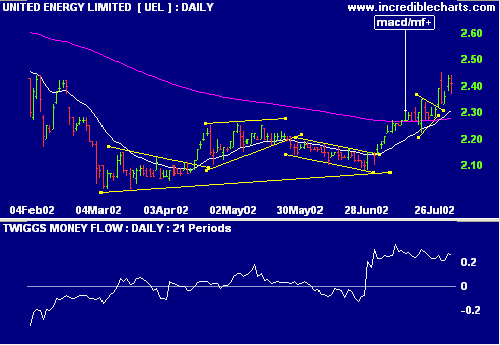
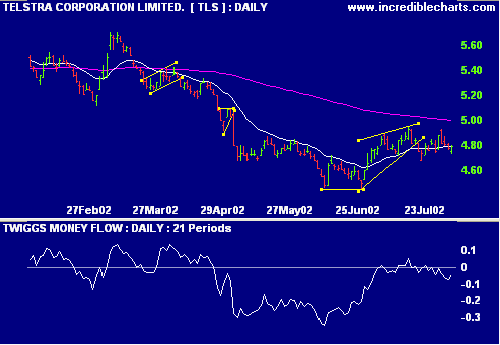
Stage changes are highlighted in bold.
- Energy [XEJ] - stage 4 (RS is rising)
- Materials [XMJ] - stage 4
- Industrials [XNJ] - stage 4 (RS is rising)
- Consumer Discretionary [XDJ] - stage 4
- Consumer Staples [XSJ] - stage 4 (RS is rising)
- Health Care [XHJ] - stage 4
- Property Trusts [XPJ] - stage 4 (RS is rising)
- Financial excl. Property Trusts [XXJ] - stage 4
- Information Technology [XIJ] - stage 4
- Telecom Services [XTJ] - stage 1 (RS is rising)
- Utilities [XUJ] - stage 1 (RS is rising)
A stock screen of the ASX 200 using % Price Move (1 month: +5%) shows the strongest sectors as:
- Electric Utilities
- Construction & Engineering
- Oil & Gas Exploration & Production
The stock market is neither efficient nor random. It is not efficient because there are too many poorly conceived opinions; it is not random because strong investor emotions can create trends.
- William J O'Neil.
Back Issues

Author: Colin Twiggs is a former investment banker with almost 40 years of experience in financial markets. He co-founded Incredible Charts and writes the popular Trading Diary and Patient Investor newsletters.
Using a top-down approach, Colin identifies key macro trends in the global economy before evaluating selected opportunities using a combination of fundamental and technical analysis.
Focusing on interest rates and financial market liquidity as primary drivers of the economic cycle, he warned of the 2008/2009 and 2020 bear markets well ahead of actual events.
He founded PVT Capital (AFSL No. 546090) in May 2023, which offers investment strategy and advice to wholesale clients.
